What Is Homemade Soyaki Sauce?
Soyaki sauce is a flavorful fusion of soy sauce and teriyaki, combining the best of both worlds into one versatile, umami-rich condiment. It delivers the savory depth of soy sauce, the sweet and tangy balance of teriyaki, and the aromatic notes of garlic, ginger, and sesame.
This sauce is more than just a simple seasoning. It’s a multi-purpose kitchen staple that enhances everything from stir-fries and grilled meats to marinades and dipping sauces. Whether you’re looking to add depth to vegetables, glaze salmon, or marinate chicken, soyaki sauce provides the perfect balance of sweet, salty, and savory flavors.
Print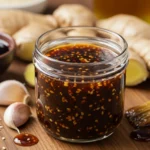
Soyaki Sauce Recipe
- Total Time: 10 minutes
- Yield: ¾ cup (6 servings)
- Diet: Gluten Free
Description
This homemade soyaki sauce is a savory, slightly sweet, and umami-rich condiment that blends the deep, salty flavor of soy sauce with the garlicky, gingery essence of teriyaki sauce. Perfect as a marinade, glaze, stir-fry sauce, or dipping sauce, this recipe delivers restaurant-quality flavors using simple pantry ingredients. Plus, it’s customizable, allowing you to adjust the sweetness, spice, or thickness to your preference.
Ingredients
Base Ingredients:
- ½ cup soy sauce (low-sodium recommended)
- ¼ cup honey or brown sugar
- 2 cloves garlic, minced
- 1 teaspoon fresh ginger, grated
- 1 tablespoon rice vinegar
- 1 teaspoon sesame oil
Optional Enhancements:
- 1 tablespoon sesame seeds (for added texture and nuttiness)
- 1 teaspoon cornstarch + 1 tablespoon water (for thickening)
- ¼ teaspoon red pepper flakes (for a mild spicy kick)
- 2 tablespoons pineapple juice (for a fruity depth)
Instructions
Prepare the Ingredients:
- Mince the garlic and grate the ginger for the freshest flavor.
Combine the Ingredients:
- In a small saucepan, whisk together the soy sauce, honey (or brown sugar), garlic, ginger, rice vinegar, and sesame oil.
- If using sesame seeds or red pepper flakes, add them now.
Simmer the Sauce:
- Heat over medium-low until the mixture gently simmers. Stir occasionally to dissolve the sugar completely.
- Let it cook for 3-5 minutes, allowing the flavors to blend.
Adjust Thickness (Optional):
- If you prefer a thicker sauce, mix 1 teaspoon cornstarch with 1 tablespoon water to create a slurry.
- Slowly stir the slurry into the sauce and continue to cook for 1-2 minutes until thickened.
Cool and Store:
- Remove from heat and let it cool to room temperature before transferring to an airtight container.
- Store in the refrigerator for up to two weeks. Shake well before each use.
Notes
- For a gluten-free version, use tamari instead of soy sauce.
- For extra umami, add a splash of fish sauce or a teaspoon of miso paste.
- For a deeper caramel-like sweetness, use dark brown sugar instead of honey.
- Use this sauce as a marinade for chicken, beef, tofu, or seafood. It also works great as a dipping sauce for dumplings or sushi.
- Make it ahead of time and store in small portions for easy use throughout the week.
- Prep Time: 5 minutes
- Cook Time: 5 minutes
- Category: Sauce, Condiment
- Method: Simmered
- Cuisine: Asian-Inspired
What Makes Soyaki Sauce Unique?
Soyaki sauce stands out because it:
- Blends two classic Asian flavors – soy sauce for rich umami and teriyaki for a touch of sweetness.
- Works as a marinade, glaze, stir-fry sauce, or dip, making it highly adaptable.
- Offers a homemade alternative to store-bought sauces, allowing full control over ingredients.
- Balances flavors beautifully, ensuring neither sweetness nor saltiness overpowers the dish.
A Versatile Sauce for Every Dish
Soyaki sauce can be used in multiple ways:
- Marinade – Perfect for chicken, beef, seafood, or tofu.
- Glaze – Ideal for roasted vegetables, grilled meats, or salmon.
- Dipping Sauce – Pairs well with dumplings, sushi, and spring rolls.
- Stir-Fry Sauce – Enhances noodles, rice dishes, and sautéed vegetables.
Homemade vs. Store-Bought Soyaki Sauce
Many brands offer bottled soyaki sauce, but a homemade version is fresher, healthier, and customizable. Making it from scratch ensures quality ingredients and the ability to adjust sweetness, saltiness, and spice levels to personal taste.
If you love bold, well-balanced flavors, soyaki sauce is a game-changer in the kitchen. It brings depth and complexity to simple meals, making everyday cooking easier and more delicious.
Key Ingredients for the Best Soyaki Marinade
The secret to a great soyaki sauce lies in its perfect balance of savory, sweet, and tangy flavors. Each ingredient plays a key role in creating a sauce that is rich, aromatic, and versatile.
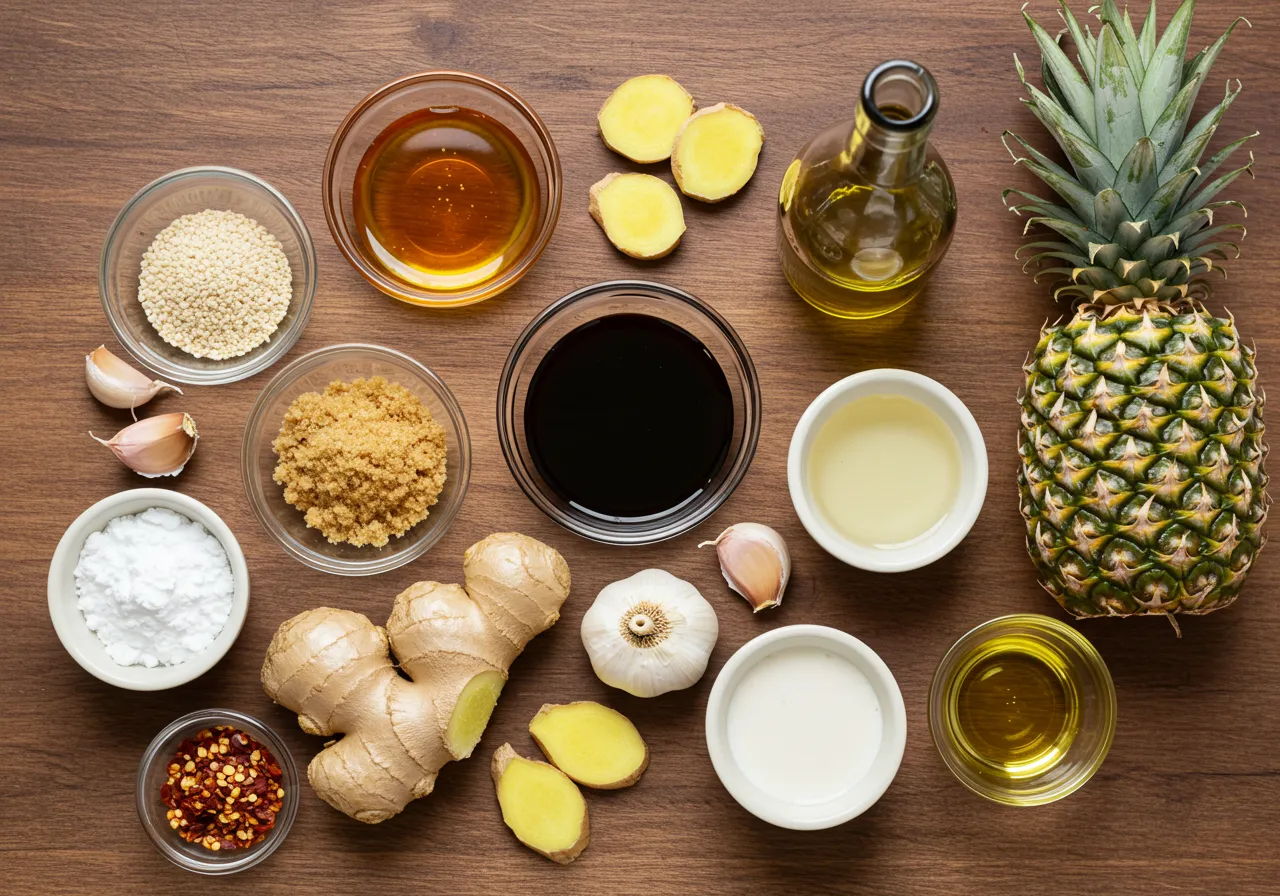
Essential Ingredients
- Soy Sauce (½ cup) – The foundation of the sauce, providing deep umami and saltiness. Use low-sodium soy sauce if you prefer a milder taste.
- Honey or Brown Sugar (¼ cup) – Adds the signature sweetness that balances the saltiness of the soy sauce. Honey gives a smoother, floral note, while brown sugar offers a deeper, caramel-like flavor.
- Garlic (2 cloves, minced) – Infuses the sauce with a bold, aromatic kick. Using fresh garlic provides the best flavor, but garlic powder can be a convenient substitute when needed.
- Ginger (1 teaspoon, grated) – Brings warmth and a slight spiciness, enhancing the overall depth of flavor. Fresh ginger is ideal for maximum freshness.
- Rice Vinegar (1 tablespoon) – Adds a mild tanginess that balances the sweetness and rounds out the flavors.
- Sesame Oil (1 teaspoon) – Contributes a nutty, toasty aroma, making the sauce more complex and fragrant.
Optional Enhancements
- Sesame Seeds (1 tablespoon) – Adds texture and a subtle crunch, enhancing both flavor and presentation.
- Cornstarch Slurry (1 teaspoon cornstarch + 1 tablespoon water) – Helps thicken the sauce if you prefer a glaze-like consistency.
- Red Pepper Flakes (¼ teaspoon) – Introduces a touch of heat for those who enjoy a spicy kick.
- Pineapple Juice (2 tablespoons) – Brings a tropical sweetness, making the sauce even more flavorful and well-rounded.
Choosing the Right Ingredients
- To make a gluten-free version, replace soy sauce with tamari for a similar rich, umami flavor.
- For a deeper flavor, use dark soy sauce or add a splash of Worcestershire sauce.
- For a bolder sweetness, try maple syrup instead of honey or sugar.
A well-crafted soyaki sauce transforms everyday meals into restaurant-quality dishes. With these carefully selected ingredients, you can create a sauce that enhances everything from grilled meats to vegetable stir-fries.

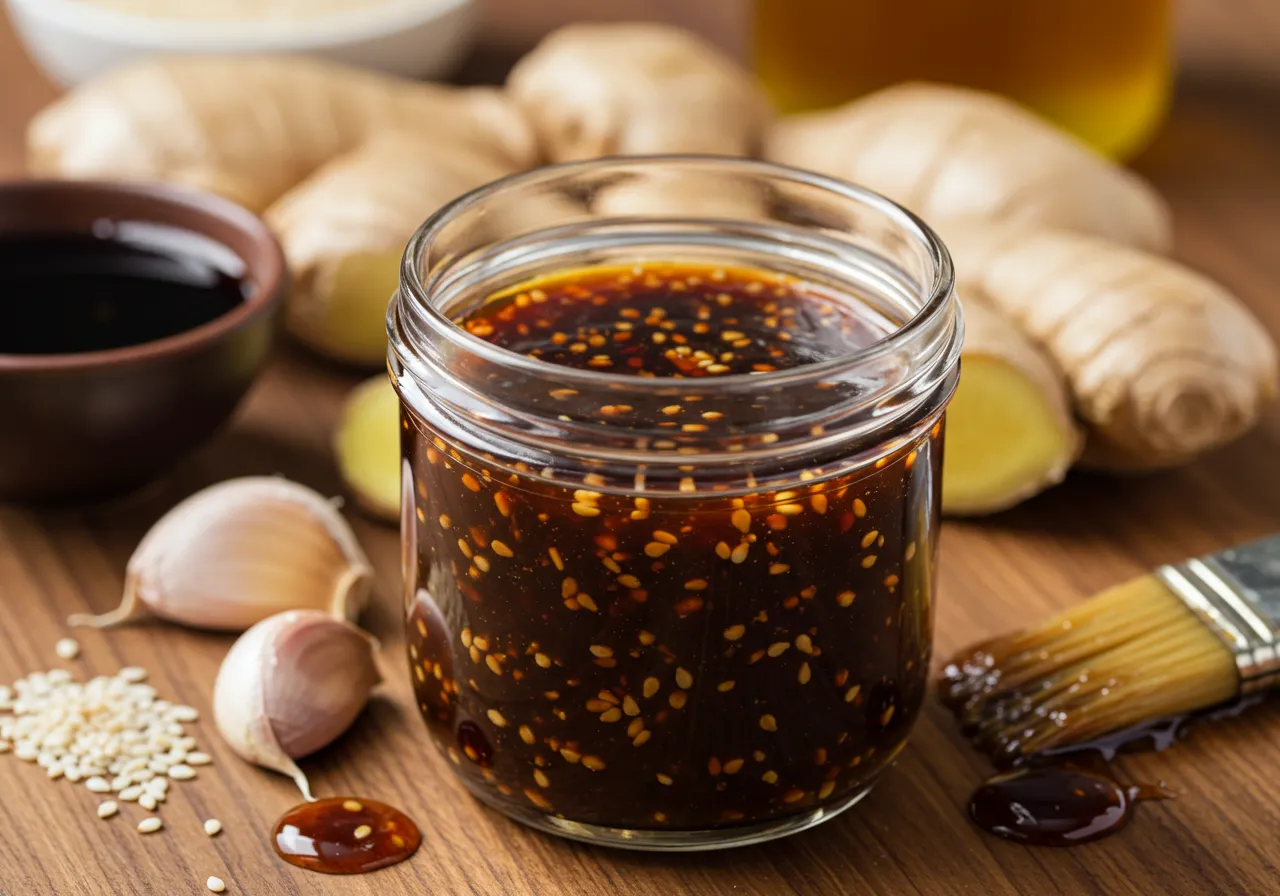
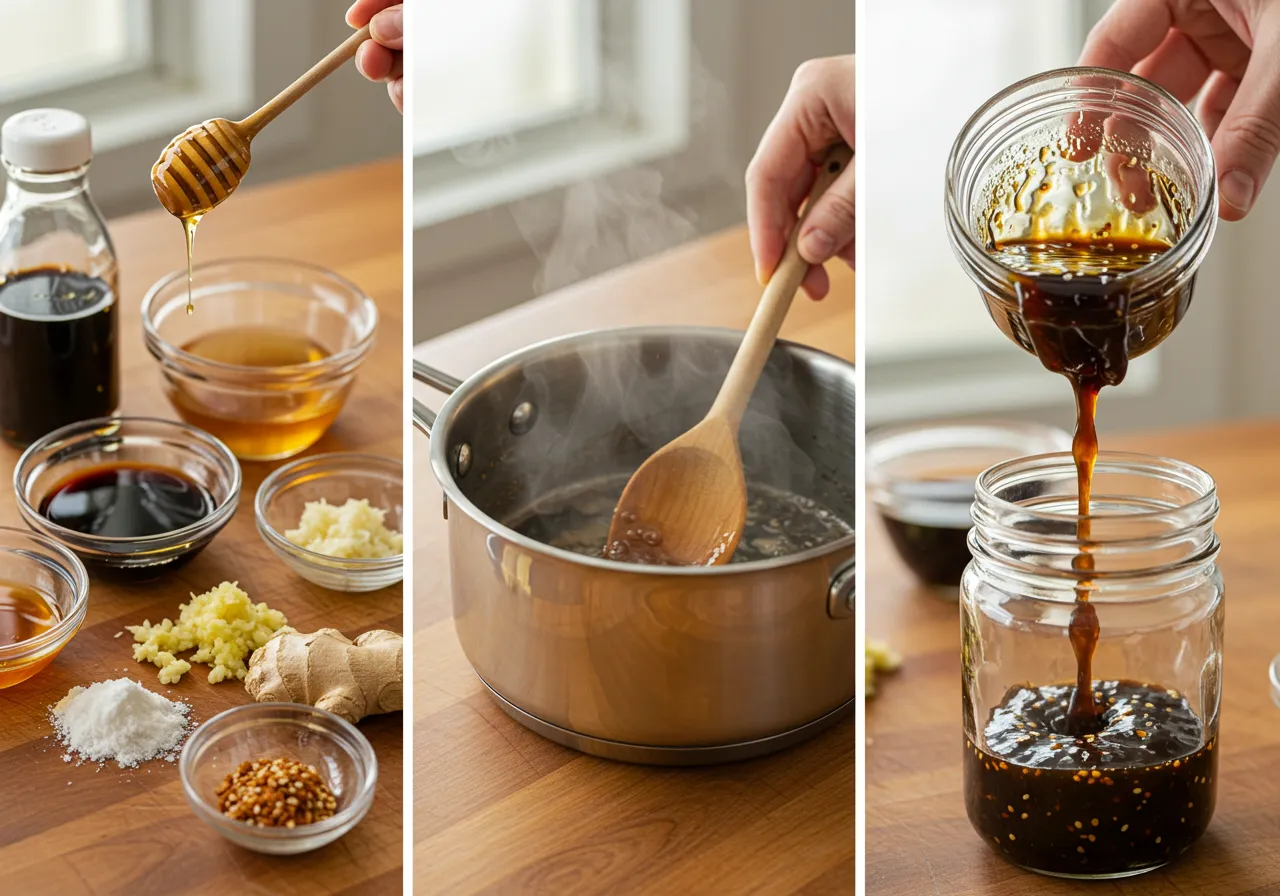
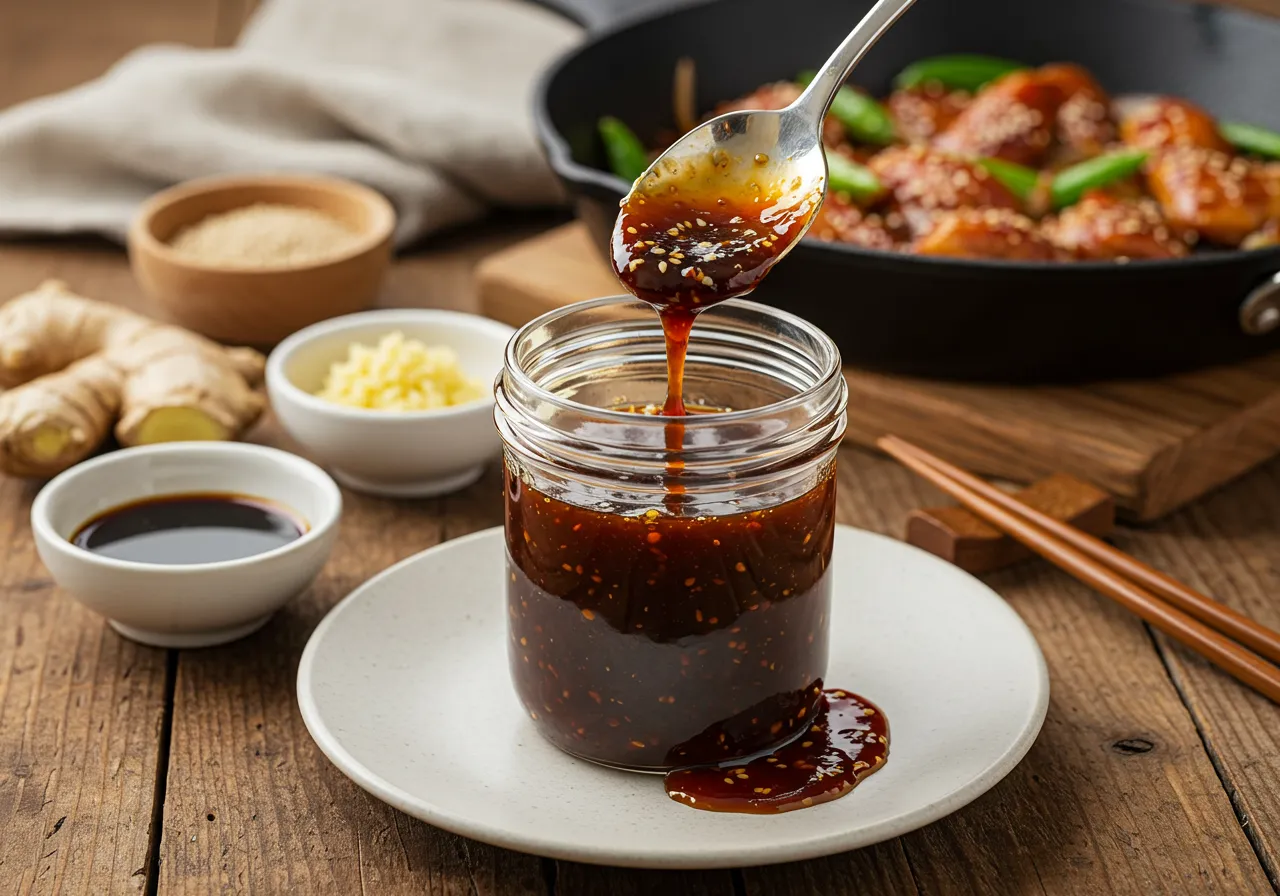

1 thought on “Soyaki Sauce Secrets That Will Transform Your Cooking”